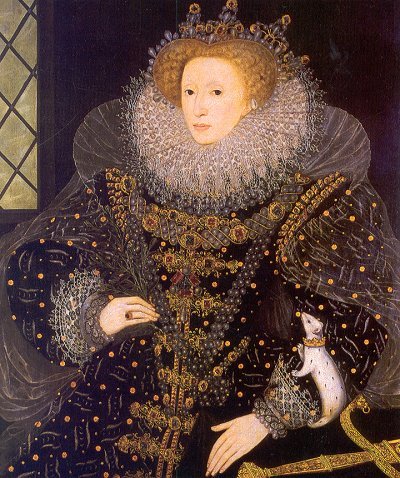 Who is buried in Grant's Tomb? Asked on many quiz shows, including the Groucho Marx-hosted You Bet Your Life, this was the supposed "easy" question; one a host would ask a contestant so they would not go home empty-handed. Despite being a consolation prize question, it is actually quite tricky for two reasons: first, Grant's Tomb is really a mausoleum - North America's largest, in fact - meaning the bodies are kept above ground. The proper answer to the question, then, is "nobody." Yar har. Second, the Tomb houses the bodies of both Ulysses S. Grant and his wife Julia, although Marx often accepted "Grant" as an appropriate response. While in New York a few years back, I visited Grant's Tomb which is in a nice location in Riverside Park overlooking the Hudson River - prime New York City property. Sitting on a bench near the gargantuan limestone building, I overheard a son asking his father the famous trick question:
Who is buried in Grant's Tomb? Asked on many quiz shows, including the Groucho Marx-hosted You Bet Your Life, this was the supposed "easy" question; one a host would ask a contestant so they would not go home empty-handed. Despite being a consolation prize question, it is actually quite tricky for two reasons: first, Grant's Tomb is really a mausoleum - North America's largest, in fact - meaning the bodies are kept above ground. The proper answer to the question, then, is "nobody." Yar har. Second, the Tomb houses the bodies of both Ulysses S. Grant and his wife Julia, although Marx often accepted "Grant" as an appropriate response. While in New York a few years back, I visited Grant's Tomb which is in a nice location in Riverside Park overlooking the Hudson River - prime New York City property. Sitting on a bench near the gargantuan limestone building, I overheard a son asking his father the famous trick question: "Who lives here?" asked the child,
"Thomas Jefferson," the father replied.
"Oh."
The father and son walked away, hand in hand. Sure, I think it is safe to say we all use $20 bills more often than we use $50 bills, but Ulysses S. Grant is not a man one should confuse with Jefferson.
Military historian J.F.C. Fuller described Grant (born Hiram Ulysses Grant) as "the greatest general of his age and one of the greatest strategists of any age." Indeed, Grant won many important battles, rose to become general-in-chief of the Union armies, and is credited with winning the American Civil War. Some may even argue that Grant receives more respect for his military years than the ones he spent as President in the White House. It is interesting that Grant is seen as a military hero when in fact he was very mild-mannered and even said of himself, "I am more of a farmer than a soldier. I take little or no interest in military affairs." During a visit to Mexico, Grant attended a bullfight but left before the fight was over, disgusted with the cruelty displayed towards the animal. In his personal memoirs, Grant recounted, "The sight to me was sickening. I could not see how human beings could enjoy the sufferings of beasts, and often of men, as they seemed to do on these occasions." One would not expect to hear such tender sentiments from a celebrated war hero, but a war hero Grant was - not to mention, a man whose love for a good cigar led to the making of a legendary story.
While Grant fought in the Mexican War, he did so reluctantly, even calling it "one of the most unjust wars ever waged by a stronger nation against a weaker one." Hmm... sounds familiar. Grant reportedly saw the Civil War as a punishment for America's sins in Mexico and when President Abraham Lincoln called for volunteers to enlist in the Union army, Grant did so with great zest. In addition to enlisting, Grant helped organize Illinois volunteer regiments and the Governor of the state asked him to organize one particularly boisterous regiment. By September of 1861 Grant whipped the regiment into shape and became the brigadier general of volunteers in the war. Unstoppable, Grant took Fort Henry and attacked Tennessee's Fort Donelson in February of 1862. Simon P. Buckner, Fort Donelson's Confederate commander, proposed a cease-fire and when asked for his terms, Grant famously replied, "No terms except an unconditional and immediate surrender can be accepted. I propose to move immediately upon your works." Needless to say, the Confederates surrendered and Grant was given the nickname "Unconditional Surrender Grant," which is quite a mouthful if you ask me. Two months after his victory at Fort Donelson, Grant fought at the Battle of Shiloh, a bloody skirmish that ultimately ended as another victory for Grant. After the Battle of Shiloh Lincoln joyfully chirped, "When General Grant once gets possession of a place he seems to hang onto it as if he had inherited it."
While the Battle of Shiloh was indeed a victory for the Union, the taking of Fort Donelson came at a crucial point in the Civil War, and many argue that this triumph is Grant's shining moment during the war. Indeed, the capture of Forts Henry and Donelson were the first significant Union victories in the war and opened two great rivers as avenues of invasion to the heartland of the South. In addition, the Union suffered 2,691 casualties while the Confederacy saw 13,846, largely due to the Confederate surrender. The Union and its supporters rejoiced, the Chicago Tribune announced the city "reeled mad with joy," and many proclaimed Grant a savior. After his victory the public showered Grant with gifts of thanks, including 10,000 boxes of cigars.
A well-known cigar afficionado, it is said that Grant smoked his way through all 10,000 boxes in five years.

